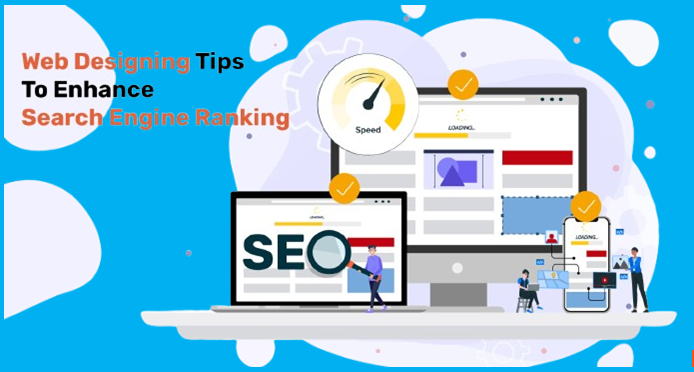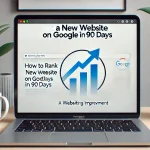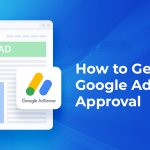SEO and site design are inextricably linked in terms of Google ranking. A attractive website is excellent, but if it is not search engine optimized, it will not generate the necessary visitors. On the other hand, an SEO-friendly site that lacks strong design might provide a poor user experience.
So, how can you strike a balance between SEO and design to build a site that ranks highly while also engaging visitors? Let us break it down.
1. Mobile Responsiveness is a Must
Google highlights mobile-first indexing, which means your website’s mobile version is indexed first. If your website is not mobile-friendly, you are losing out on rankings and prospective visitors.
How to Optimize:
- Use a responsive design that adapts to different screen sizes.
- Test your site with Google’s Mobile-Friendly Test.
- Keep navigation simple for mobile users.
- Optimize images for faster loading on mobile.
2. Site Speed Matters
A slow-loading website impacts both SEO and user experience. Google has acknowledged that site performance is a ranking factor, therefore optimizing your website is a no-brainer.
How to Optimize:
- Compress images without losing quality using tools like TinyPNG.
- Use browser caching to load pages faster for returning visitors.
- Minify CSS, JavaScript, and HTML.
- Choose a fast web hosting provider.
- Use a Content Delivery Network (CDN) to speed up global access.
3. SEO-Friendly URL Structure
A clean and simple URL structure makes it easier for both search engines and users to understand your pages.
How to Optimize:
- Use short, descriptive URLs (e.g.,
yourwebsite.com/seo-tipsinstead ofyourwebsite.com/p=123). - Include your primary keyword in the URL.
- Avoid unnecessary characters or symbols.
4. Improve Navigation and UX
A well-structured website helps users find what they need quickly, reducing bounce rates and improving dwell time.
How to Optimize:
- Keep your navigation simple and intuitive.
- Use clear calls-to-action (CTAs) to guide visitors.
- Make sure internal links are logically placed and easy to follow.
- Add a search bar for easier navigation.
5. Optimize Images for SEO
Images enhance design, but if not optimized, they can slow down your site.
How to Optimize:
- Use descriptive file names (e.g.,
seo-friendly-design.jpginstead ofimage1.jpg). - Add alt text to describe images for search engines and accessibility.
- Use next-gen image formats like WebP for better compression.
6. Implement Schema Markup
Schema markup helps search engines understand your content better, leading to rich snippets in search results.
How to Optimize:
- Use schema for articles, reviews, FAQs, and products.
- Generate schema markup with Google’s Structured Data Markup Helper.
- Validate it using the Rich Results Test.
7. Secure Your Website with HTTPS
Google prefers secure websites, so using HTTPS is a ranking factor.
How to Optimize:
- Get an SSL certificate from your hosting provider.
- Ensure all internal links point to HTTPS URLs.
- Redirect HTTP pages to HTTPS versions.
8. Optimize for Core Web Vitals
Google’s Core Web Vitals measure user experience based on loading speed, interactivity, and visual stability.
How to Optimize:
- Improve Largest Contentful Paint (LCP) by optimizing page load speed.
- Reduce First Input Delay (FID) by minimizing JavaScript.
- Fix Cumulative Layout Shift (CLS) by ensuring stable elements.
9. Internal Linking Strategy
Internal linking helps distribute page authority and improve user experience.
How to Optimize:
- Link to relevant pages naturally.
- Use descriptive anchor text.
- Avoid excessive internal linking (stick to a logical structure).
10. Write SEO-Optimized Content
Great design needs great content to rank well.
How to Optimize:
- Use target keywords naturally in headings and body text.
- Write clear, engaging, and valuable content.
- Structure content with headings (H1, H2, H3) for readability.
Conclusion
A well-optimized website is more than simply visually attractive; it must also be fast, structured, and adhere to SEO standards. By focusing on these important factors, you can build a website that not only ranks higher in Google but also keeps visitors engaged and converting.










